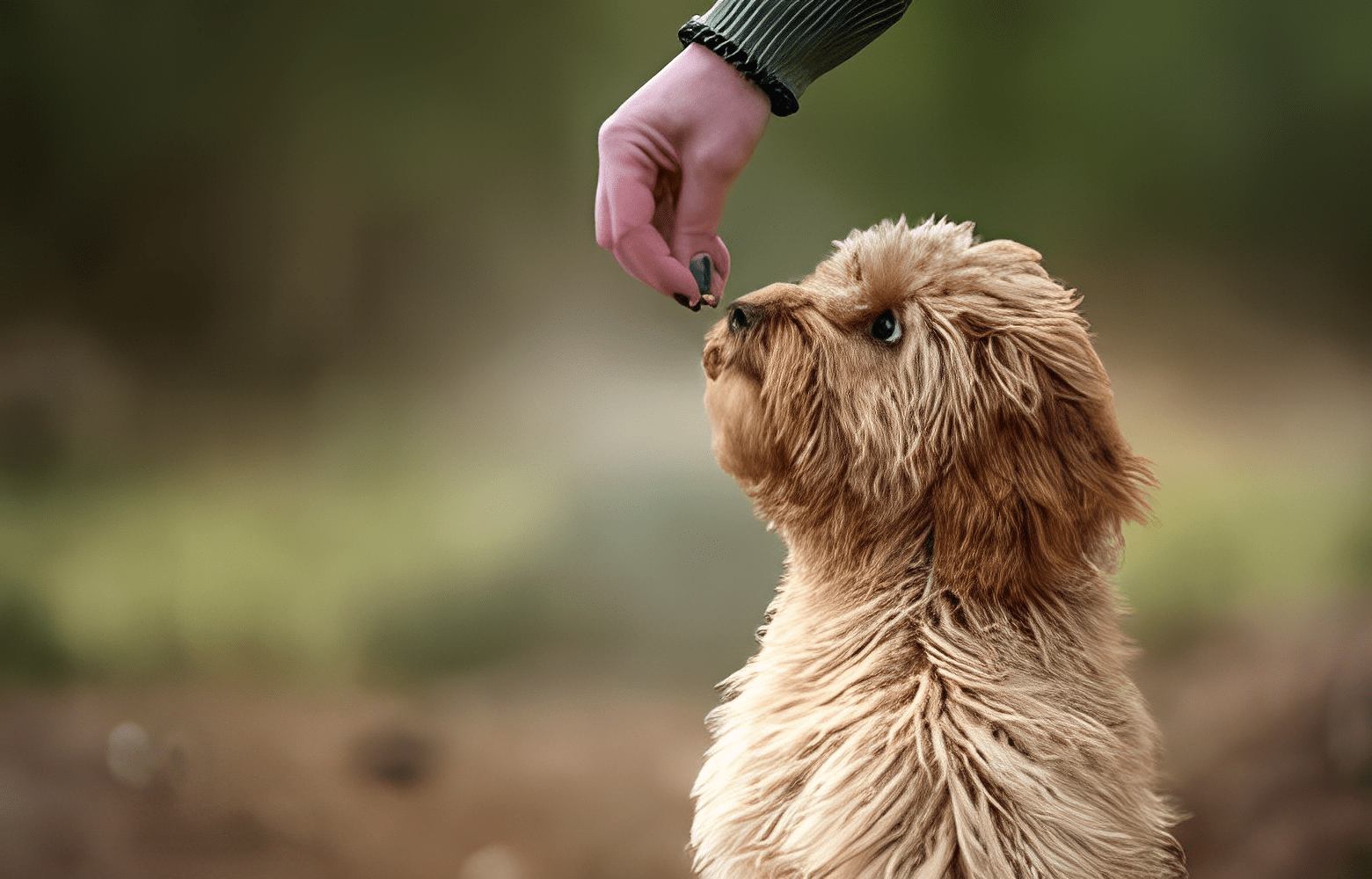Can Golden Retriever Live Outside: Helps & Guide
Golden Retrievers are known for their friendly nature and make wonderful family pets. As a popular dog breed, understanding their living conditions is crucial for their well-being. One common question that arises is whether Golden Retrievers can live outside.
In this blog post, we’ll explore the characteristics of these lovable dogs, weigh the pros and cons of outdoor living, and provide helpful tips for creating a comfortable outdoor environment. Whether you’re a current Golden Retriever owner or considering adopting one, this guide aims to shed light on the factors to consider when deciding where your furry friend should call home.
Characteristics of Golden Retrievers
- Friendly and Gentle Nature:
- Due to their well-known kind and amiable nature, golden retrievers make wonderful family pets.
- High Intelligence:
- Known for their intelligence, Golden Retrievers are quick learners, making them easy to train for various activities and commands.
- Social Animals:
- These dogs thrive on social interactions and companionship, enjoying the company of both humans and other pets.
- Energetic and Playful:
- Golden Retrievers have a high energy level, requiring regular exercise and playtime to keep them physically and mentally stimulated.
- Loyal and Devoted:
- Known for their loyalty, Golden Retrievers form strong bonds with their owners and are often devoted family members.
- Adaptable to Environments:
- They are versatile and can adapt well to different living conditions, whether in urban apartments or spacious homes with yards.
- Love for Water:
- Many Golden Retrievers have a natural affinity for water and enjoy activities such as swimming.
- Well-Mannered:
- With proper training, Golden Retrievers exhibit good manners and are generally well-behaved dogs.

Pros and Cons of Keeping Golden Retrievers Outside
Pros:
- Ample Space for Physical Activity:
- Outdoor living provides Golden Retrievers with more space to roam, run, and engage in physical activities, promoting a healthy lifestyle.
- Natural Stimulation and Mental Well-being:
- Being outdoors exposes Golden Retrievers to various stimuli, including sights, sounds, and smells, contributing to mental enrichment and happiness.
- Potential Reduction in Indoor Mess:
- Outdoor living may lead to less mess indoors, as dogs have more space to play and relieve themselves outside.
Cons:
- Need for Proper Shelter:
- Golden Retrievers require suitable shelter to protect them from extreme weather conditions, including rain, snow, and heat.
- Loneliness and Lack of Social Interaction:
- Dogs are social animals, and keeping them outside for extended periods may lead to loneliness and a lack of regular human interaction.
- Weather Considerations and Health Risks:
- Exposure to harsh weather elements can pose health risks, including heatstroke in hot weather and hypothermia in cold climates.
Factors to Consider
| Factors | Considerations |
|---|---|
| Climate and Geographical Location | Evaluate if the climate is suitable for outdoor living, considering temperature extremes and seasonal changes. |
| Shelter Availability | Ensure there is adequate and appropriate shelter to protect the Golden Retriever from weather elements. |
| Owner’s Commitment | Assess the owner’s dedication to meeting the dog’s needs, including regular feeding, exercise, and veterinary care. |
| Social Interaction | Recognize the importance of human and other pet interactions to prevent loneliness and behavioral issues. |
| Exercise Requirements | Golden Retrievers have high energy levels; outdoor living should provide ample space for regular physical activities. |
| Health Considerations | Be aware of potential health risks associated with outdoor living, such as exposure to parasites, insects, or extreme weather. |
| Training and Socialization | Implement proper training and socialization to ensure the dog adapts well to an outdoor environment. |
Tips for Providing a Comfortable Outdoor Living Space
1. Shelter:
Ensure your Golden Retriever has a weather-resistant dog house or shaded area for protection from the elements, providing a cozy retreat.
2. Water Access:
Maintain a constant supply of clean water to keep your dog hydrated, particularly in warmer weather, promoting overall health.
3. Nutrition:
Provide a balanced and nutritious diet tailored to your dog’s needs, supporting their energy levels and well-being.
4. Veterinary Care:
Schedule regular vet check-ups to monitor health, administer vaccinations, and address any emerging issues promptly.
5. Rest Area:
Create a comfortable rest space, whether inside a dog house or under shade, for your dog to rest and recharge.
6. Secure Space:
Establish a fenced outdoor area to ensure your Golden Retriever’s safety and prevent wandering.
7. Enrichment:
Supply interactive toys to stimulate your dog mentally, preventing boredom and enhancing overall happiness.
8. Exercise Routine:
Maintain a consistent exercise routine, including walks and playtime, to meet your dog’s physical needs and prevent obesity.
9. Monitoring:
Regularly observe your dog for signs of discomfort or health issues, making adjustments to their outdoor living conditions as needed.
Training and Socialization
1. Training:
Effective training is crucial for Golden Retrievers living outdoors. They need to know basic instructions like sit, remain, and come for their safety and welfare. Consistent positive reinforcement techniques, including treats and praise, help reinforce desired behaviors. Training also extends to leash manners, ensuring a well-behaved dog during walks and interactions with others.
2. Socialization:
Golden Retrievers thrive on social interactions, even when living outdoors. Expose them to various environments, people, and other animals from a young age to promote positive socialization. This helps prevent behavioral issues such as aggression or fearfulness. Regular outings to parks or dog-friendly areas contribute to a well-socialized and confident outdoor-living Golden Retriever.
3. Exposure to Various Environments:
Introduce your Golden Retriever to different outdoor environments, including urban settings, parks, and trails. This exposure helps them acclimate to diverse stimuli, reducing the likelihood of anxiety or fear in new situations. Gradual exposure and positive reinforcement build their confidence in various outdoor settings.
4. Interaction with Other Dogs:
Facilitate positive interactions with other dogs to enhance social skills. Arrange playdates with well-behaved dogs, attend dog-friendly events, or visit dog parks where they can engage in supervised play. Positive interactions contribute to a well-adjusted and sociable outdoor-living Golden Retriever.
5. Positive Reinforcement:
Emphasize positive reinforcement techniques during training and socialization. Reward good behavior with treats, praise, or toys, reinforcing desired actions. Positive reinforcement builds a strong bond between the owner and the dog, making the training process enjoyable and effective.
6. Consistent Routine:
Establish a consistent daily routine for training and socialization activities. Regularity helps Golden Retrievers understand expectations, leading to a more well-behaved and predictable outdoor-living experience. Consistency in training and socialization efforts contributes to a harmonious relationship between the dog and the owner.
Signs of Discomfort or Issues
1. Changes in Behavior:
Watch for sudden shifts in your Golden Retriever’s behavior. Unexplained aggression, excessive barking, or withdrawal may indicate discomfort, stress, or health issues.
2. Altered Eating Habits:
Changes in appetite or eating habits can signal underlying issues. Loss of interest in food, excessive hunger, or reluctance to eat may indicate dental problems, gastrointestinal discomfort, or other health concerns.
3. Lethargy or Lack of Energy:
A noticeable decrease in energy levels or increased lethargy may be a sign of illness, pain, or emotional distress. Monitor your dog’s activity levels for any significant deviations from their usual behavior.
4. Excessive Scratching or Grooming:
Persistent scratching, licking, or chewing at specific body parts could be indicative of allergies, skin irritation, or discomfort. Investigate the cause and seek veterinary advice if necessary.
5. Changes in Bathroom Habits:
Alterations in urination or defecation patterns may signal urinary tract issues, digestive problems, or other health concerns.
6. Vocalization:
Unusual vocalizations, such as whining, whimpering, or yelping, may indicate pain, discomfort, or emotional distress. Pay attention to the context and frequency of vocalizations to identify potential issues.
7. Physical Signs of Pain:
Observe for signs of physical discomfort, such as limping, favoring one leg, or reluctance to engage in physical activities. These could point to musculoskeletal problems or injuries.
8. Changes in Coat Condition:
A dull, dry, or excessively shedding coat might be a sign of nutritional deficiencies, allergies, or underlying health issues.
9. Unusual Aggression or Fearfulness:
Sudden aggression or fearfulness towards people, other animals, or certain situations may signal discomfort, anxiety, or a negative experience.
10. Excessive Panting or Respiratory Issues:
Persistent panting, wheezing, or other respiratory issues may indicate overheating, allergies, or respiratory problems.
Also Read: Will A Golden Retriever Attack An Intruder: Helps & Guide
Conclusion
In conclusion, understanding the needs of your Golden Retriever is key to deciding if outdoor living is suitable. While outdoor spaces can offer benefits like ample play area and natural stimulation, it’s vital to provide proper shelter, regular social interaction, and monitor for signs of discomfort.
Responsible ownership involves consistent training, socialization, and addressing health concerns promptly. Whether your Golden Retriever lives indoors or outdoors, creating a comfortable and safe environment is essential. By considering your dog’s well-being and adapting to their needs, you’ll foster a happy and healthy life for your beloved furry companion.












Leave a Reply